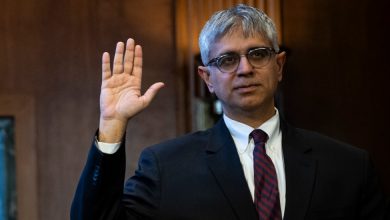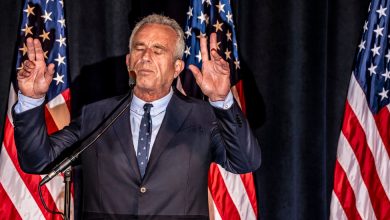What Kind of Power Should the Names of New York Have?

Americans have place-names on the brain. Amid a widespread push to remove monuments of Confederates and Christopher Columbus from our public squares, many people have begun demanding the removal, too, of more subtle reminders of systemic racism inscribed in the names of the places — streets and cities, bridges and schools — by which we orient our lives.
Activists in Brooklyn, for example, have recently highlighted the 70 streets in the borough whose names recall colonial-era New Yorkers who owned slaves. In Upper Manhattan, Representative Adriano Espillat proposed changing the name of Washington Heights (named for the slave-owning founding father) and adjoining neighborhoods to “Quisqueya Heights” — a name that honors an Indigenous name for the home island, in the Caribbean, of many of the area’s residents from the Dominican Republic.
Yet at a community meeting this fall, hundreds of area residents turned up to inform Mr. Espillat that they like the name of their neighborhood just fine. (He has altered his resolution to simply recognize the Dominican community’s presence and contributions to the neighborhood.)
The fallout was telling. We need a more sophisticated way to approach questions of renaming than the one espoused earlier this year by, among others, Eric Adams. During the mayoral primary, Mr. Adams was joined by the other leading Democratic candidates in insisting that New York should rename streets and schools named after people who held slaves. Mr. Adams said, “We should not honor people that have had an abusive past.”
But it’s essential, in the light of larger debates about how best to confront our collective past, that we give weight not merely to such place-names’ origins. We need to pay heed, too, to the varied meanings they’ve gained, across time, from the people who use them and value them for what they have come to mean for their community.
To study the names that make up a city is to access layers of its history — to encounter the people and tongues of varied eras whose tags stuck to the city’s maps. Here in New York, those layers include names derived from the Indigenous Lenape (Manhattan, Canarsie, Rockaway), Dutch names left by settlers from Holland (Bowery, Bleecker, Brooklyn) and English names implanted by the British who seized New Amsterdam in 1664 and rechristened it New York (and then labeled its outlying counties Queens and Kings). After the American Revolution, New York gained streets named for heroes of that war (MacDougal, Greene, Lafayette) and for the founders of the United States (Madison Avenue, after our fourth president — who was also a slave owner).
New York was a colonial slave port and is also full of streets named for people who bought and sold humans as chattel. Few historical truths I convey to my N.Y.U. students seem so impactful, for young people who often have no idea that slavery wasn’t just “down south,” as telling them that Nostrand Avenue in Brooklyn, say, was possibly named for the family of a landowner in the area who, according to New York’s 1790 census, also owned six slaves. These facts are vital to understanding how modern New York came to be.
But beside that is another truth: John Van Nostrand’s surname today most resonates among Caribbean immigrants who’ve long made his old acreage home as the place to go for Brooklyn’s best Trinidadian doubles or Barbados hot sauce — and as a thoroughfare now also bisected with blocks named for heroes of Caribbean history like Toussaint L’Ouverture.
Place-names have the power to encode history and signal social mores. But we’ve also always had the power to change what they evoke. The once-marshy part of Upper Manhattan that we know as Harlem got its name from Dutch settlers who thought its wetlands and hills resembled the market town of Haarlem near Amsterdam. Those Dutchmen were affiliated with a commercial enterprise — the Dutch West India Company — that was intrinsic to the “triangle trade” of Africans into slavery in the New World. But no one today is advocating erasing “Harlem” from our maps. And the reason is plain: The name now evokes not its founders nor the Netherlands but an American neighborhood whose name has grown iconic, thanks to its proud residents over the past century and more, of Black freedom and culture.
To study where place-names come from is also to chart resistance and happenstance and convoluted tales that lie behind many place-names in New York — ranging from Anglicized riffs on Old Dutch words (“Gramercy” grows from what the Dutch called that area’s “krom moerasje” — crooked marsh; “Coney Island” from what they called “Conyne Eylandt” — island of rabbits) to a more recent Puerto Rican play on the Lower East Side. That neighborhood’s name, once evocative of Jewish life and later of hipster life in Lower Manhattan, is also the inspiration for the Spanglish nickname “Loisaida” that now hangs from street signs on Avenue C.
Denizens of the Manhattan Beach section of Brooklyn recently wrestled with what to do with Corbin Place — a byway named for the 19th-century developer, Austin Corbin, who built the neighborhood but also headed the American Society for the Suppression of Jews. Wanting to disavow the latter part of his legacy but not the warm memories many have of growing up here, they changed not the street’s name but its referent: Now “M. Corbin Place” officially honors not an old antisemite but rather New York’s foremost female participant in the Revolutionary War, Margaret Corbin.
Other institutions and communities have adopted clear principles that we’d do well to consider: when and to what end a place was first named; whether or not its namesake’s “principal legacy” could be said to include advocating slavery or racism; whether or not her or his memory’s presence in public space was designed, or is used now, to uphold white supremacy or other values we reject.
Such criteria make it clear why it’s entirely apt that sites commemorating old Confederates — most of which date not from the Civil War but from the era and ideology of Jim Crow — be removed.
But they also remind us why it’s vital to continue to devote as much energy to making the past visible — to commemorating history’s victims, and celebrating those who fought to change it — in new ways. Nowadays when I want to educate my students about how slavery shaped New York, I show them the official plaque that now stands at the corner of Wall Street and Water Street, in the financial district, to mark the site of Manhattan’s main slave market in the 1700s.
We have a long way to go before the mainstream version of history inscribed on our maps and on many of our streets is balanced by sites hailing figures who sought to change its course, especially members of social groups still rarely hailed in public space: women, people of color, members of the working classes.
One reason historians warn against condescending to the past is to selfishly safeguard our present: Who’s to say our great-grandchildren won’t all agree with our vegan friends that eating dead animals was the height of barbarism? But there’s another, subtler source of danger lurking in such condescension — the lack of credit we give to those who’ve showed us, by attaching new meanings to place-names once redolent of slavery, that part of the power of names lies in our capacity to shift what they mean.
The names we give to places have a mysterious power, the writer Henry Porter observed, to become a part of them. Which is a way of saying they become a part of us. There are names we may decide to change. But we should be careful not to erase the meanings we’ve vested them with — and continue to push to inscribe public space with other histories that need to be made visible and better known.
Joshua Jelly-Schapiro (@jellyschapiro) teaches at N.Y.U. and is the author, most recently, of “Names of New York: Discovering the City’s Past, Present, and Future Through its Place-Names.”
The Times is committed to publishing a diversity of letters to the editor. We’d like to hear what you think about this or any of our articles. Here are some tips. And here’s our email: [email protected].
Follow The New York Times Opinion section on Facebook, Twitter (@NYTopinion) and Instagram.





